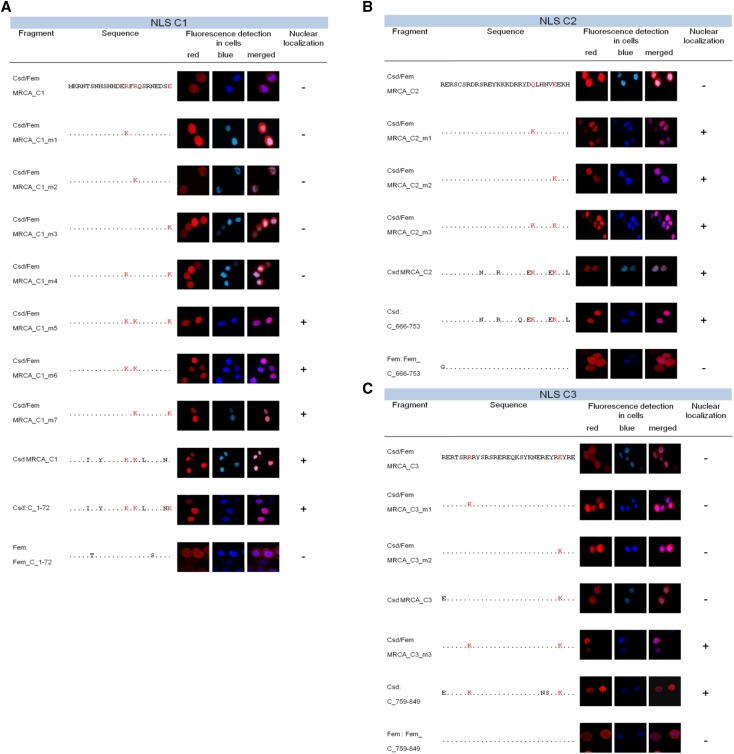Figure 3.
Evolutionary origin of NLS motifs in the C1, C2 and C3 segments through amino acid substitutions. A: Essential amino acid substitutions in the C1 segment for gaining nuclear localization activity through post-duplication divergence. B: Essential amino acid substitutions in the C2 segment for gaining nuclear localization activity through post-duplication divergence. C: Essential amino acid substitutions in the C3 segment for gaining nuclear localization activity through post-duplication divergence. The sites and the evolved amino acids in the Csd protein involved in the gain of nuclear transport function are shown in red letters. The sites are amino acid positions 14, 16 and 24 for the C1 segment; 243 and 248 for the C3 segment; and 259 and 280 for the C3 segment, with allele B2–25 as a reference. The red fluorescence signal in the pictures of Sf21 cells indicates the C-segment variants fused to the Rubia protein. The blue signal indicates the nuclear-localized H2B_Cerulean protein.

